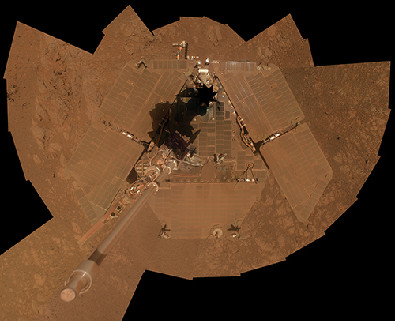NASA’s Opportunity at 10

NASA’s Opportunity rover was built for a three-month mission on Mars, but continues to return valuable scientific data 10 years later. Opportunity, one of NASA’s twin Mars Exploration Rovers, reached the Red Planet Jan. 24, 2004 (PST). It landed three weeks after its twin, named Spirit. Both rovers made important discoveries about wet environments that could have supported microbial life on ancient Mars. Spirit stopped communicating with Earth in 2010. Opportunity is continuing to provide scientific results, and currently is investigating the rim of a crater 14 miles (22 kilometers) wide.
New findings from rock samples collected and examined by NASA’s Mars Exploration Rover Opportunity have confirmed an ancient wet environment that was milder and older than the acidic and oxidizing conditions told by rocks the rover examined previously.
In the Jan. 24 edition of the journal Science, Opportunity Deputy Principal Investigator Ray Arvidson, a professor at Washington University in St. Louis, writes in detail about the discoveries made by the rover and how these discoveries have shaped our knowledge of the planet. According to Arvidson and others on the team, the latest evidence from Opportunity is landmark.

